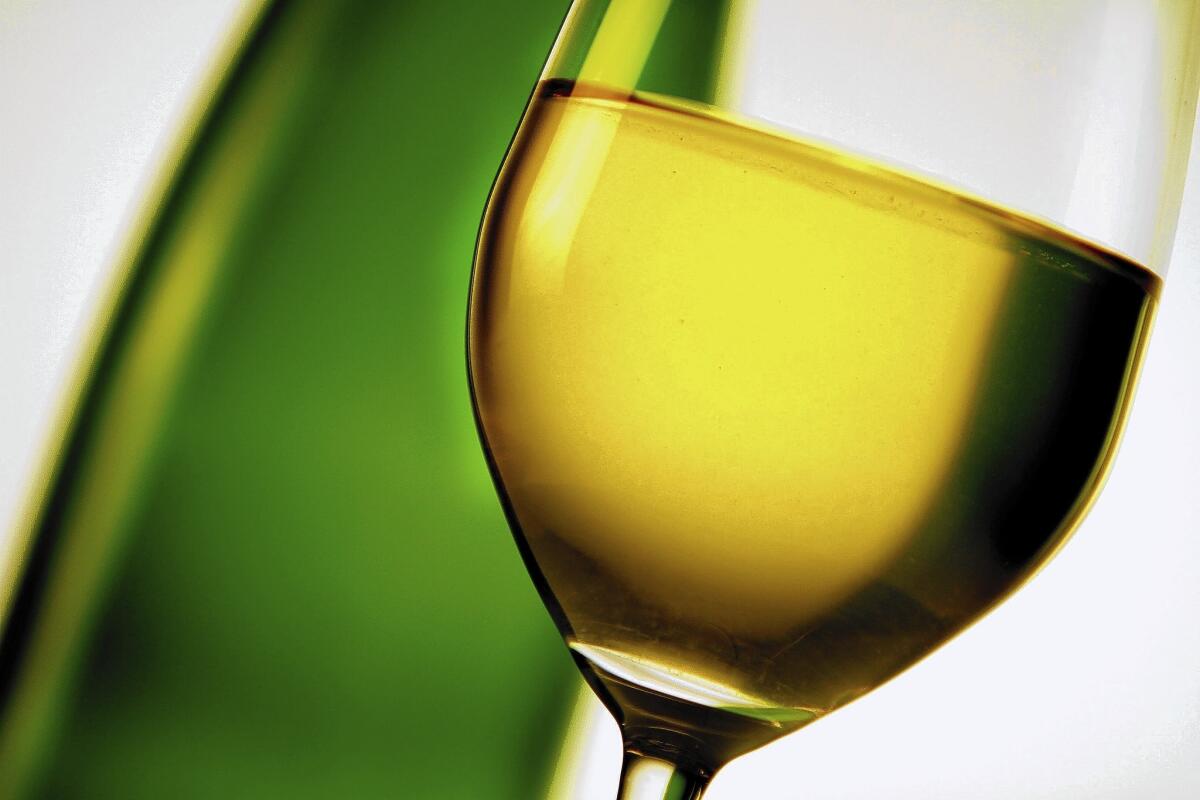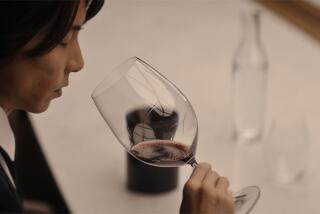Riesling rises in California vineyards, and its cheerleader is a Brit

Riesling, more widely planted than Chardonnay in California just 50 years ago, is on the rise again. And Riesling’s most ardent supporter is British wine writer Stuart Pigott, whose blog chronicles his adventures on what he likes to call Planet Riesling, along with sharp observations and pungent opinions.
Pigott, who divides his time between Berlin and New York, is not one to pull punches. A Mosel winemaker who was unhappy with Pigott’s assessment of his wines once hit him over the head with an umbrella in a German post office. But the 53-year-old Brit is one of the good guys, an investigative wine journalist who looks at the facts and the statistics and yet when he tastes something he loves can let out a whoop of unbridled joy.
------------
FOR THE RECORD:
Rieslings: In the June 7 Saturday section, an article about British wine writer Stuart Pigott and the increasing popularity and production of Riesling said that, while Germany once had 605 of the Riesling vineyards in the world, it now has about 47%. It should have said that Germany once had 60% of the vineyards.
------------
Pigott first hooked up with Riesling in the 1980s and has been writing about it ever since. For years he’s had a wine column in the Sunday Frankfurter Allgemeine Zeitung, Germany’s equivalent of the New York Times, and he has written a slew of books, mostly in German. Next week his book “Best White Wine on Earth: The Riesling Story” will be published by Stewart, Tabori & Chang.
Why Riesling? “Riesling is the white wine of our time,” he writes. “In a wine world dominated by smoke and mirrors, where standardization of flavor is the norm, Riesling remains strikingly and deliciously original.” Extremely food-friendly, it comes in a vast array of styles, cycling through piercing bone-dry wines to ethereal, every so slightly sweet examples to honeyed medium-dry wines and luscious full-tilt dessert wines. Now that’s versatile. Pigott even pairs Riesling, a dry or medium-dry one, with a pastrami sandwich.
Early on in his research for this book, he discovered things were much different than he’d expected. Something was happening. He saw it in the number of “Summer of Riesling” festivals around the world and in the growing acreage devoted to the grape.
According to the Nielsen data he cites, Riesling has been the fastest-growing varietal in the U.S. market for five straight years. An economist friend persuaded him to look more deeply at the numbers for the U.S. state by state. In Washington, Riesling vineyards had exactly doubled in the last 10 years. “Doubled!” says Pigott with a gleam in his eye. “Then I looked at California. Holy [cow]! That was really up as well. Not 100%, but a lot! And nobody had noticed any of this happening.” Michigan was way up. In New York state, Riesling was now the most important vinifera grape.
A decade ago, America was No. 4 in the world in Riesling production. Now it’s overtaken France and Australia to take the No. 2 spot. And Germany, birthplace of Riesling? Where it once had 605 of the Riesling vineyards in the world, it now has about 47%.
What’s driving this resurgence in Riesling? Winemakers like Ted Bennett of Navarro Vineyards in Anderson Valley or Stuart and Charles Smith of Smith Madrone in Napa Valley, who fell in love with the grape and wouldn’t let go. But also wineries such as Chateau Ste. Michelle in Washington, the biggest Riesling brand in the world, which produces more than 5 million bottles of its off-dry Columbia Valley Riesling, which sell for less than $10. “And it sells out,” Pigott says gleefully.
Young sommeliers have been a big factor in Riesling’s newfound popularity too. Eager to make a mark with their wine lists, they’re pushing anything but the same old California cult Cabernets or Chardonnays. They’re hand-selling the wines to a more adventurous clientele. And Riesling fits nicely into that scenario.
Part of Riesling’s appeal is certainly its price. Many cost $10 or less. “Almost every Riesling your heart could desire is on the shelf for a two-figure price,” writes Pigott. “It’s a special wine we can afford, instead of the fast track to financial ruin, like some other wines.”
More to Read
Eat your way across L.A.
Get our weekly Tasting Notes newsletter for reviews, news and more.
You may occasionally receive promotional content from the Los Angeles Times.










